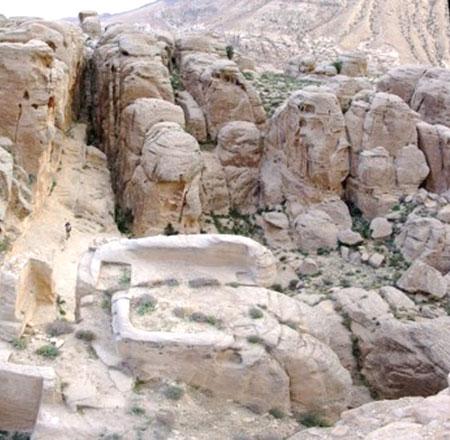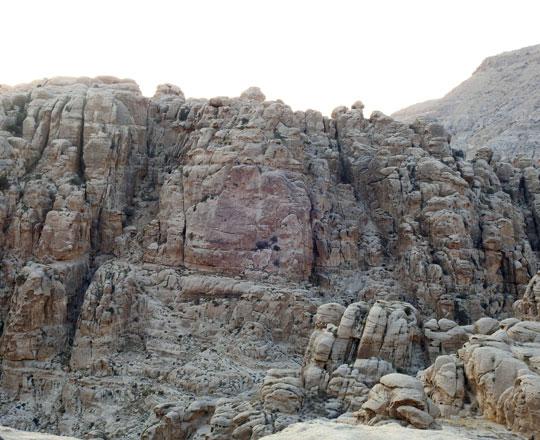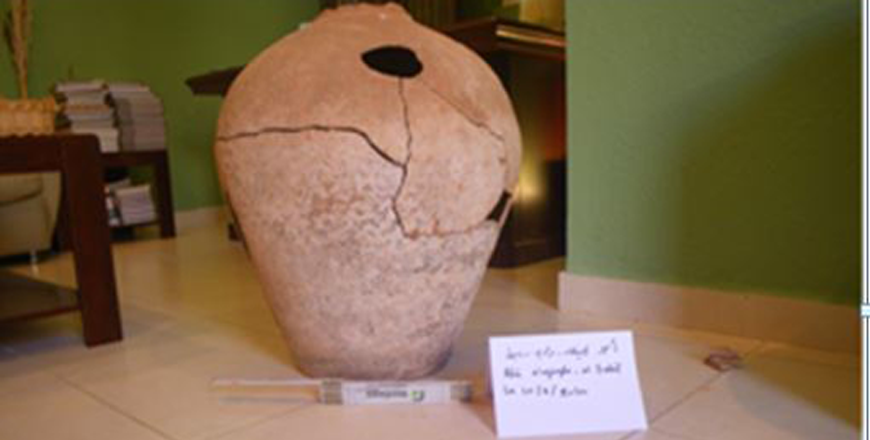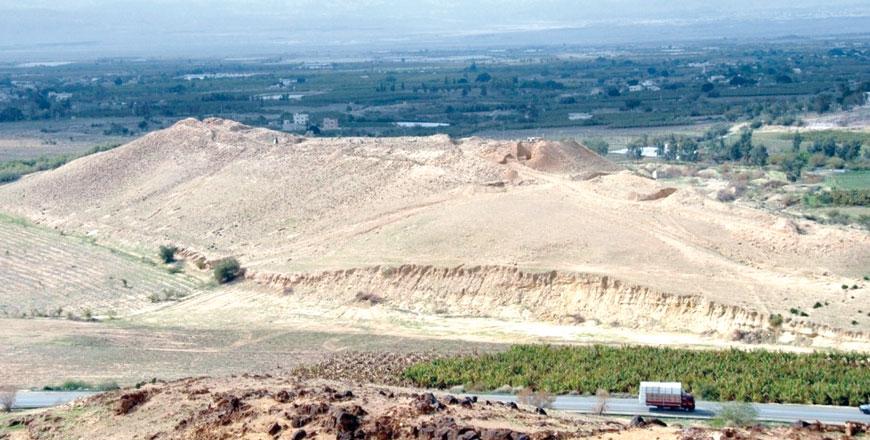You are here
Archaeologists explore history of mysterious mountain stronghold ‘Sela’ in southwest Jordan
By Saeb Rawashdeh - Jan 02,2019 - Last updated at Jan 03,2019

A gate area and natural rock tower that forms the entrance to the former mountain top fortress of Sela (Photo courtesy of biblicalarchaeology.org)
AMMAN — Overseeing the Edom Plateau, south of Jordan, between Tafila and Busayra, stands the Edomite-Nabataean mountain stronghold, Sela, a fortress carved into the mountain, dating back more than 3,000 years.
A carved inscription and relief (engraved representation) of the Neo-Babylonian King Nabonidu (556-539BC), uncovered in Sela, stand witness to the importance of the age-old fortress during the period of Mesopotamian expansion into the area of Transjordan, said Jordanian scholar Mohammad Najjar.
Sela was strategic to any military movement into the southern parts of Transjordan, as it guarded the settlements and agrarian land plots in its vicinity and stood as a watchtower over the entire south-western regions.
Greek historian Strabo (64BC-24AD) described it as “the metropolis of the Nabataean... fortified all around by rock, the outside part of the site being precipitous and sheer, and the inside parts having springs in abundance, both for domestic use and watering gardens”.
Najjar argued that evidence points to the Iron Age II (Edomite period) as the beginning of Sela’s habitation, as a few painted Edomite potteries were found, while painted Nabataean pottery sherds were completely lacking.
Ministry of Tourism and Antiquities publications and literature, as well as the Petra Visitors Centre, suggest the Nabataean and Edomite cultures are interconnected.
Archaeologically, the area was only habitable if water was managed, and this was only possible by means of constructing water channels, deposits and cisterns, Najjar concluded.
Evidence retrieved from the site supports this conclusion, he insists, as he suggests that Sela’s habitation must have “begun in the Edomite period, when the knowledge and techniques of water management [catchment, distribution and storage] were devised and mastered by settlers”.
A 2018 Spanish expedition to Sela, including four professional climbers (Noriega Fuente, Gonzales Hernandez, Mejias Salles and Lopez Estacio) uncovered sherds of equipment and pottery dating back to the second Iron Age, and monuments rising high with carvings and inscription.
Rocío Da Riva from the University of Barcelona led the expedition, from September 22 to 29, Najjar continued, noting that a study of the Babylonian inscription was made by means of "direct observation", that involved taking photographs and measuring the monument.
"As the monument is 90 metres high up on the face of the rock, abseiling with ropes and climbing equipment was absolutely necessary. That was the reason to engage four professional climbers in our mission," Najjar explained.
Much remains untold about the monumental structure, but the team looked for additional structures that would otherwise be necessary for carving the facade, he said, adding that they have analysed and explored many techniques used for building the monument.
"The inscriptions, the monument and its surface remain untouched,” the veteran archaeologist underlined, as he reaffirmed that the team was cautious not to employ any technique or equipment that would potentially damage the structure.
Between September 2 and September 26, Najjar and another archaeologist, Michael Herles, undertook a detailed survey of the site, both on top of the promontory as well as in the wadi (valley), and 87 sherds of pottery were retrieved.
Among them were "43 rims, 23 handles, four bases and 17 body sherds”, which, as Najjar explained, served either decorative or chronologically indicative purposes.
In some instances, body sherds were collected for further analytical work, Najjar underlined.
The identification of surface pottery revealed that the area was settled for an extensive period of time, he noted.
While it may be difficult to say how intense this occupation was so early into the discovery of the site, the dating of the sherds was as follows: 42 sherds were attributed to the Iron Age IIc, 23 to the Nabataean period and 15 to the Roman/Byzantine period, while the remaining 14 were identified as Ayyubid-Mamluk and possibly Ottoman.
However, no Bronze Age or Iron Age I material (pottery) was detected in the course of the survey, he added.
Related Articles
AMMAN — An inscription in Sela, south of Jordan, has gripped the attention of scholars, according to a Spanish historian.Hanging from a clif
AMMAN — Wadi Rum is a desert on the southern part of Jordan also known the Valley of Moon.
AMMAN — Tell Al Hammam, a site northeast of the Dead Sea, can help researchers understand “city states” in the southern Levant, and perhaps



















